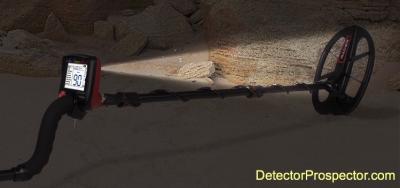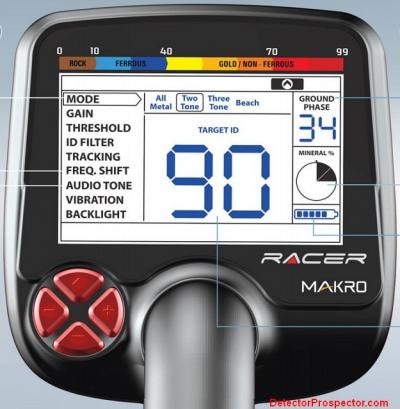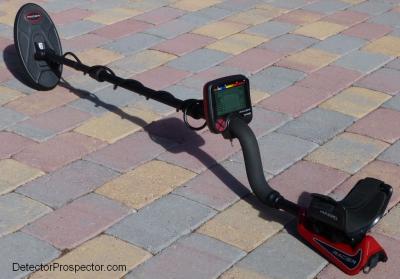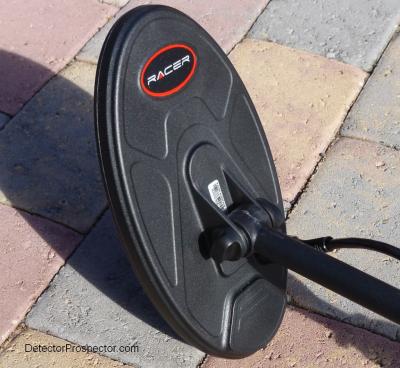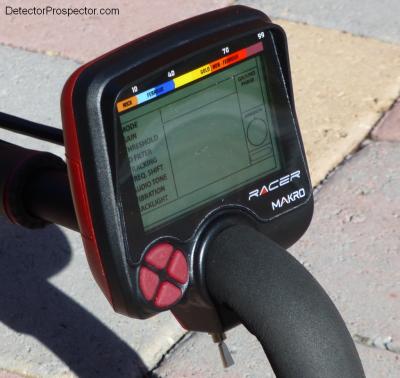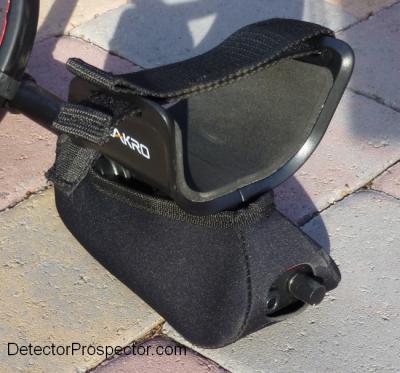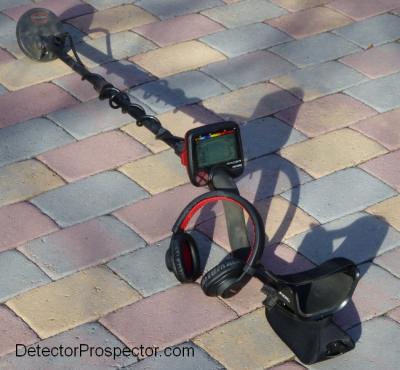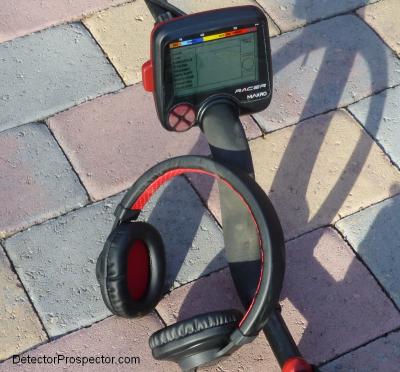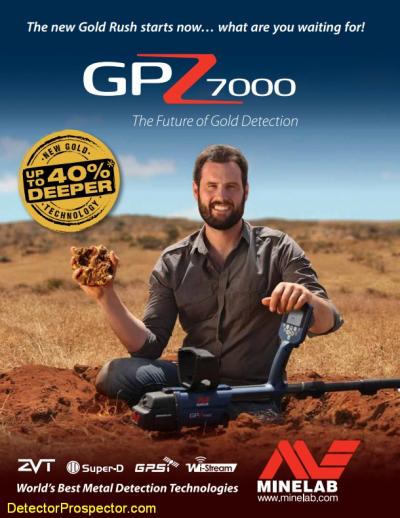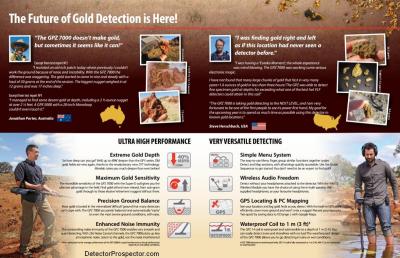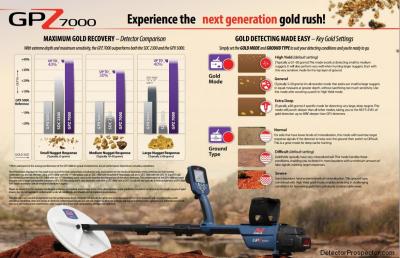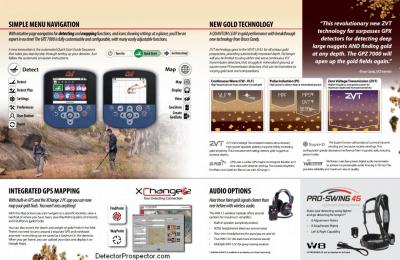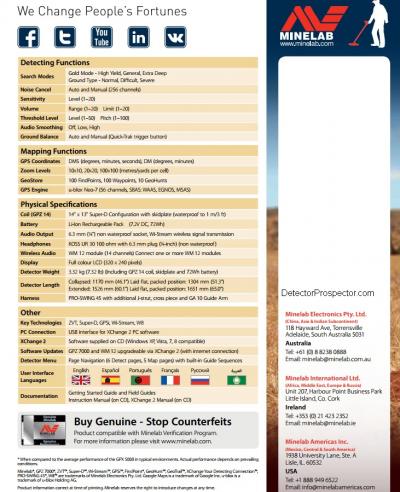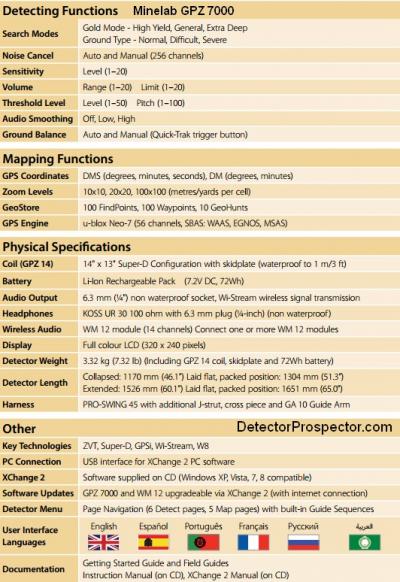-
Posts
19,755 -
Joined
Content Type
Forums
Detector Prospector Home
Detector Database
Downloads
Everything posted by Steve Herschbach
-

Half Pounder With Cheese
Steve Herschbach replied to Steve Herschbach's topic in Minelab Metal Detectors
Man, even I am getting sick of seeing me! IRS is always welcome, I pay my taxes fair and square. -

Official Minelab GPZ 7000 Sales Brochure
Steve Herschbach replied to Steve Herschbach's topic in Minelab Metal Detectors
Ask away all you want. Answers will be forthcoming when I or others can. -

Official Minelab GPZ 7000 Sales Brochure
Steve Herschbach replied to Steve Herschbach's topic in Minelab Metal Detectors
Well, I am not revealing anything by pointing out the stock coil is a 13" x 14" semi-elliptical. The specs also say nothing about a discrimination function or control. -

Official Minelab GPZ 7000 Sales Brochure
Steve Herschbach replied to Steve Herschbach's topic in Minelab Metal Detectors
Ok, I think it is pretty obvious I was a field tester. At this point I do have to wonder what with all the information coming out why we are still on hold but the fact is until I am officially given the go-ahead I can't comment. I really am sorry about that as I want to be able to talk as much as you want me to be able to talk, maybe more. Hopefully the powers that be look at the situation and say "go" soon. Please try and be patient for just a little bit longer. -
I am wondering but it has to be one of the biggest target id number displays I have seen. Very nice, and very clear screen, excellent backlight. One thing that annoyed me with my Gold Bug Pro is that in all metal the big number shows the ground phase, and you get a tiny target id "speedometer". Here you get a big target id and a still decently large ground phase in the upper right hand corner. Of course when ground balancing the main number shows the ground phase with 1/5 fine increments in the upper right. The pie chart display for mineral intensity is the best idea yet for that - if that circle turns solid you are in really, really bad ground.
-

Waiting for the Gobble
Steve Herschbach replied to doc holiday's topic in Nokta / Makro Metal Detectors
I would therefore rate you as having a trained ear and being a more professional operator. I have to admit there are times I prefer gated responses and flat out nulling. Usually I am patient enough to listen and sort through the tones but there are times I just want something a bit simpler. Then I grab the CTX and block out the ferrous and live the quieter life! -

Official Minelab GPZ 7000 Sales Brochure
Steve Herschbach replied to Steve Herschbach's topic in Minelab Metal Detectors
As far as price goes, I am not a dealer and I am not selling anyone on anything. They do not send me dealer price lists. As soon as the first ad goes live somewhere with a price we will all know. -

Official Minelab GPZ 7000 Sales Brochure
Steve Herschbach replied to Steve Herschbach's topic in Minelab Metal Detectors
I guess that was me. Whining huh? My theory is the manufacturers have got it in for me personally. The more I bitch, the heavier they make the detectors. First we get the Minelabs at 5.3 lbs. Then White's came at me with the TDI at 5.6 lbs. Garrett was having none of that and managed to get the ATX up to 6.9 lbs. Apparently Minelab was not willing to relinquish the crown and here we are at 7.32 lbs. They are obviously working in concert in an attempt to break me. Well they won't do it! Come on Fisher, do your worst. Do I hear 8 lbs? Your turn to have a go at my arm! It's an arms race!! -
Well, I have had the experience of reading other reviews of the Makro Racer on the internet before using one myself. It has highlighted for me that how I look at detectors and how they work for me is often remarkably different than what others experience. Depth tests in particular from back east have nearly no connection to what is see in the soil I hunt in. And air tests as usual show one thing and the ground another. I have to preface this by noting I really am waiting for the Makro Gold Racer. The Racer offers the physical aspects I am looking for but the Gold Racer is tweaked specifically for gold, and gold is my thing! Some of what follows is just speculation on my part based on both models being Racer models and so therefore likely to share the same basic physical design. Whether the color will be the same, what the frequency will be, and even if they can share coils I do not know at this time. Still, here is a picture of what the Gold Racer will probably look like, except possibly the color. Makro Racer with Optional 5.5" x 10" DD Coil The bottom line I am pleased with the Makro Racer. I think people are just getting a little crazy with all the expectations it is supposed to replace detectors costing up to twice as much. This is a feature packed 14 kHz single frequency metal detector for $649, nothing more and nothing less. It offers good performance for that price range and a feature set unmatched at that price. What I am looking at is a detector hot on gold with ground grab, manual ground balance, automatic ground tracking, good coil selection, at 3 lbs for $649. Unfortunately the machine caught me at a bad time between two business trips and so I have only been able to give it a spin hunting a sandy tot lot and some general park detecting, both in highly mineralized ground. The ground runs 7/8 on the cool Makro pie chart which would be 5 bars on the Fisher F75. I rigged the Racer up with the optional 5.5" x 10" DD coil just to get a total unit weight with batteries as seen in the picture above. Three pounds, 1.5 ounces. Very nice! The coil is not an epoxy filled coil making for a much better weight and balance than for instance the Fisher Gold Bug Pro with similar size coil. The Fisher coil is epoxy filled and weighs in at 1 lb 2.6 oz whereas the Makro coil weighs 12.8 ounces. That is a fairly significant weight difference out there on the end of the rod. Still, I really like the little 4.2" x 5.5" DD coil and with that coil the Racer only weighs 2 lbs 15.7 ounces. The rod assembly is very tight and stout feeling. The hand grip, despite what others reported, works just fine for me. The angle changes if held high to give my thumb instant access to the four way control buttons. I am happy with the grip showing how it is very much a personal preference area. The Racer suits me because I have always imagined this as the "small coil" detector and the sister company Nokta FORS Gold as the "big coil" detector due to weight and balance design differences. I found the depth and sensitivity of the 14 kHz Racer to be nearly identical to the 15 kHz FORS Gold, which is exactly what I was hoping for. I am talking about real world in highly mineralized ground. The perceived difference between the DI2 and DI3 modes all but disappears in bad ground. Makro Racer with Optional Bluetooth Module Installed and Wireless Headphones I ran the wireless Bluetooth headphones and any lag or delay there is so minimal as to be almost unnoticeable to me. I certainly had no problem with it at all and quickly liked the wireless headphones from an operational standpoint. My only issue there is the audio quality compared to my Sun Ray Pro Golds is lacking. The Phillips phones have a muffled sound, the Sun Ray a much sharper, brighter tone. Not surprising given the relative price difference. Since we are talking Bluetooth I would like to haul the Racer to an audio store and try different headphones to find something of higher audio quality and with individual volume controls. I am a bit deaf in my right ear, another reason I like my Sun Rays with their dual volume controls. Bottom line is I found the lag issue to not be an issue for me personally but the audio quality is not what I am looking for in a headphone. My favorite feature? Quick mode switching. I was able to set up separate sensitivity levels for all metal, DI2, and DI3 modes and hunt with any one and switch rapidly between modes with the touch of a button. I only played with this a bit but immediately liked it. I found switching to all metal made for a better pinpoint mode than the pinpoint mode. Or I could hunt in all metal, then switch to two tone ferrous mode to check the target. Switching between DI2 and DI3 is instant and effortless. I like the big display, easy menu setup - bottom line I just like the detector and I don't care if anyone else does or not! Just a great little machine, well thought out and with good performance at a good price. It fits me and my hunting style but again, it really is just a preview and a stepping stone to the Gold Racer. Chances are the Racer will be the model for those seeking slightly more versatility by way of the salt water beach mode. The Gold Racer is likely to be too hot to play well with wet salt sand but that remains to be seen. So far so good though, I'm happy with where we are heading. Note added 4/7/15 The Racer is a very high gain detector susceptible to overload signals. From Link deleted since Findmall Forum update broke all old links "The electronic gain of the RACER consists of 3 levels to eliminate the internal electromagnetic noise and to adjust the saturation level. The electronic gain change points correspond to levels 39 and 69 on the Gain setting. In case of saturation (overload), you may raise your search coil a bit or adjust the Gain to the lower electronic gain level. For example, in the All Metal and Two Tone modes, if the Gain is set to 70 or above and if saturation occurs, adjusting the Gain to 69 or 39 will minimize or eliminate the saturation. Similarly, if you experience saturation in the Three Tone mode, adjusting the Gain to 39 will be sufficient. Reducing the gain will not cause a dramatic decrease in depth."
-
“This revolutionary new ZVT technology far surpasses GPX detectors for detecting deep large nuggets AND finding gold at any depth. The GPZ 7000 will open up the gold fields again.” -Bruce Candy, GPZ Inventor Back early on with the SDC 2300 I pointed to a quote from Bruce Candy http://www.detectorprospector.com/forum/topic/302-minelab-sdc-2300-my-detector-would-have-found-that/ “You will find more small nuggets and fine-threaded specimen gold in mineralised soils with the SDC 2300 than any other gold detector, including the GPX 5000.” - Bruce Candy (Chief Scientist Minelab Electronics, GPX & SDC Inventor) I figured out finally that Bruce does not seem to be a person prone to exaggeration. Nuts and bolts engineer all the way - just the facts, nothing more. I think when we all look back in a year the above quote from Bruce Candy about the GPZ will have said it all.
-
This is it folks - most of your questions answered, and fodder for forum controversy for sure! Official Minelab GPX 7000 Sales Brochure Full pdf Version
-
Scrape and detect is often just a desperation move. You detect a patch until nothing is left. Then roll the rocks and pull aside the deadwood. Eventually scraping will ensue, whether it is you or someone else. If gold remains to be found, somebody is going to find it. It just takes more work than the last person was willing to engage in. It is a lot easier with a little bulldozer! I've done a lot of that also.
-
This is the official Minelab GPZ 7000 Owners Manual 12/2018 updated (4901-0176 Rev 3) https://www.detectorprospector.com/files/file/35-minelab-gpz-7000-user-guide/ And the simple Getting Started Guide https://www.detectorprospector.com/files/file/36-minelab-gpz-7000-getting-started-guide/
-
Another Treasure Talk blog I wrote was just posted on the Minelab website at Scrape and Detect – with the SDC 2300 The Minelab SDC 2300 is a remarkable metal detector, and more people are finally realizing it. The SDC 2300 has exceptional sensitivity to very small gold and even larger gold that other pulse induction detectors have difficulty with. Porous specimen gold is being found that is surprisingly large in mass but which due to the spongy nature of the gold has been missed by other detectors. The SDC 2300 small gold capability rivals the best VLF detectors and exceeds their capability in highly mineralized ground. It is useful therefore to steal a page from the VLF playbook when it comes to detecting for small gold. The very first thing many people will find that have used other pulse induction detectors is that a nugget cup or scoop is a genuinely useful thing to have when running and SDC 2300. Some of the gold found is so small that is cannot be detected by grabbing a handful of soil and waving it over the coil. The tiniest stuff is often found by scrubbing the ground and the smallest gold signals come from gold that is nearly touching the coil. Simply holding the soil in your hand keeps the gold too far from the coil to locate it. A plastic cup or stout plastic scoop allows you to shake the material to get it right to the bottom of the scoop, which can then be run over the coil. I let the scoop touch the top of the coil to get the gold as close as possible, and it helps to locate the hot spots around the edge of the coil when dealing with the tiniest bits. It is this ability to hit very tiny gold but only at very short ranges that I want to discuss here. There are huge volumes of gold that can be detected by the SDC 2300 but at only a few inches at best. This means the SDC 2300 can be used to effectively work dry placer deposits of gold by carefully scraping and detecting them. Before I go any further I want to point out that the method I am about to describe can mean moving large volumes of soil. Even working by hand the cumulative effect can be large and falls into the realm of regulated mining methods. In the United States the term used is “significant surface disturbance” and no doubt similar issues arise in Australia and elsewhere. All I can say is be sure to always minimize the surface disturbance with proper reclamation methods including backfilling holes and redistributing topsoil. Be sure to observe all applicable regulations and have any required permits. Now, with that out of the way let’s get on with the fun! Whether by hand or with the aid of equipment the process is the same. It can be used in any dry placer location whether it is a patch on flat terrain or on a hillside, or a dry placer in a gully. First, have a plan. Decide where to start and where the material will go. The goal is to move the material as little as possible and if possible to reclaim the ground as you go. The simplest scenario is the one I undertake most often – working a hillside location or a gully. I always try to locate the lowest location that has gold, then work forward and uphill. Material is worked in strips or patches, with each successive area pulled into the previous location worked. That way the ground reclaimed as you go. In the simplest form I use a pick and a hoe or heavy duty rake. Material is loosened with the pick, then carefully raked and spread downhill. If you are dealing with very small gold that the SDC can detect at no more than two inches, and then the material must be worked about two inches at a time. Loose rock and rubble is raked into the previously worked excavation. The SDC 2300 is used to carefully detect exposed material, then the fines raked into the rubble pile. With careful methodical work a pick, rake, and SDC 2300 can substitute for a dry washer or other recovery method and leave very little gold behind. The goal at all times is to make sure every bit of material passes within an inch or two under the coil. There certainly are situations where the dry washer or other method makes more sense. But for somebody who wants to keep the gear and the backpacking to a minimum the “scrape and detect” method is a 21st century twist on older hand mining methods. If done properly dry placers can be worked with fairly high recovery rates and with minimal ground disturbance. You will also discover you find a lot of larger gold that was hidden under large rocks or just too deep to detect before. Good luck!
-

A Detector For Mom In Law
Steve Herschbach replied to Sourdough Scott's topic in Metal Detector Advice & Comparisons
Wisdom there for all detectors! -
Flood away, awesome finds! I hope now that I have moved to the "real world" that I have a shot at stuff like that. Looks like you figured out you can post on every post, no limits here to speak of. I like big pictures.
-

Waiting for the Gobble
Steve Herschbach replied to doc holiday's topic in Nokta / Makro Metal Detectors
Yes I have Ray and it is the basis of my last couple posts. Everyone seems to be desparately craving something that beat to death technology is not going to deliver. Nobody is going to deliver a single frequency detector running from 12 - 20 kHz that does anything for depth and sensitivity on gold nuggets better than what you can buy already. The difference is in packaging and price, how it sounds, how it looks, how it feels. Yes, some advances have been made recently in target separation and ferrous/non-ferrous handling. But not depth/sensitivity. Everyone is barking up the wrong tree. You want major advances in depth and sensitivity keep watching the PI and emerging hybrid worlds. I play around with air tests and it is easy to get excited. Hit the high mineral ground, all the differences compress and disappear. From my perspective for in field use the 15 kHz FORS units and 14 kHz Racer have equivalent performance. I am optimistic Gold Racer is going to be worth my wait. I am impressed with Racer but I am not going to make it something it is not. The main difference in the Makro/Nokta detectors versus for instance the Fisher units is the use of blended/rolling audio versus a gated audio response. In theory that can be better but in reality it requires a trained ear, a more professional operator. The more I do this the more comparing in field audio differences is key to everything and what works for me may not work for you. The VLF world these days is endless exercises in hair splitting and counting angels dancing on the head of a pin. -

Waiting for the Gobble
Steve Herschbach replied to doc holiday's topic in Nokta / Makro Metal Detectors
Inert dirt = air test. The depths I attain on any machine are usually about 50 - 60% of what Tom gets. Disc modes suffer more in mineralized ground compared to all metal modes. No, the Racer is not a magic wand. But yes, it holds its own with machines costing much more. The Racer at 14 kHz performs remarkably like a 19 kHz Gold Bug Pro so I am very curious the see what the Gold Racer delivers whenever it finally becomes available. That could be the machine that I end up ditching all the others for. -

Waiting for the Gobble
Steve Herschbach replied to doc holiday's topic in Nokta / Makro Metal Detectors
That is all covered at Tom's thread http://www.dankowskidetectors.com/discussions/read.php?2,72545 JAMFD (Just Another Mid Frequency Detector) but a well thought out one with some unique features.

